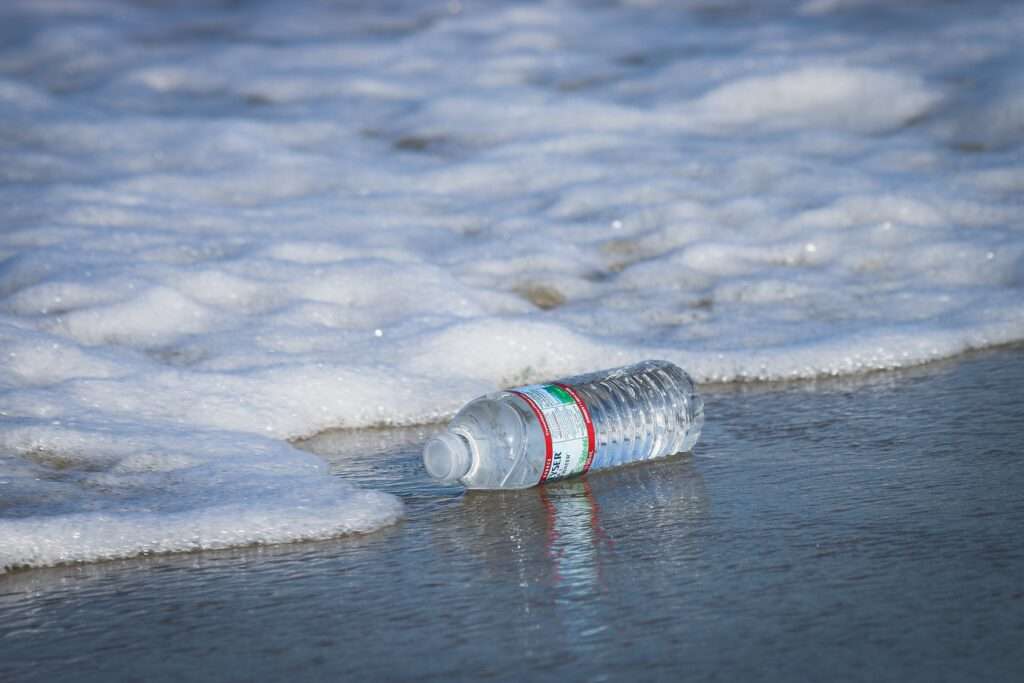By Randi Donahue
If you’re in this space, the thought of large quantities of plastic strewn about the natural world makes you cringe. You feel distressed about floating plastic islands, birds feeding plastic to their babies, and turtles getting stuck in plastic can rings. In coastal Florida, it’s now commonplace to see plasticware, straws, cigarette butts, and single-use wrappers washed ashore, dotting our white-sand beaches.
Single-use plastic like water bottles, tampon applicators, plastic bags, food containers, medical waste, and beach toys, as well as discarded or lost plastic like sunglasses and fishing gear, have made their way deep into our waterways, wreaking havoc on our marine environment, poisoning wildlife, and polluting its beauty.
Yet, as much as we know that single-use plastic is bad news, we still struggle to avoid it. And beyond the knowledge that plastic pollution harms and kills wildlife and feeling helpless about what to do, how concerned should we be about the effect of that same plastic on human health?
What are microplastics, and where do they come from?
Petroleum-based plastic was celebrated
Petroleum-based plastic was celebrated among households for its versatility and durability upon its creation in the 1950s. Although often villainized in modern times, its use does remain beneficial in specific capacities such as the medical and healthcare industries. Plastic has led to the invention of innovative, life-saving devices and helped maintain sterile conditions. However, the reality is that petroleum-based plastics do not biodegrade, and only a few plastics can be recycled. The same qualities that have allowed plastics to withstand the test of time in our kitchens and daily lives have now left us with a significant health and environmental crisis to deal with.
When plastic is introduced to the environment, it doesn’t dissolve or disappear. It stays. Like… forever. Or, in the case of larger plastics, it continues to break into smaller pieces, aka microplastics(MPs). The National Oceanic and Atmospheric Administration defines MPs as small pieces of plastic that measure less than five millimeters (just more than 3/16”). For visualization, think from less than the size of a pencil eraser down to microscopic.
Microplastics can be primary, which include plastic polymers added to cosmetics, detergents, diapers, paints, medicines, and more (i.e., microbeads in exfoliating face and body wash) or small plastics that unintentionally rub off of synthetic clothing or leach from paints as tiny plastic fibers. Primary microplastics enter the environment down our sink drains and washing machines into municipal treatment systems, where they are small enough to escape filtration and discharge right to our oceans.
The category most people think of when they think of microplastics, however, is secondary microplastics, which are MPs that have evolved from larger, single-use, and other plastic-containing products. When the life of a secondary microplastic product is over, if you can’t recycle it, even with the best intention, it often skips the landfill and ends up scattered about our rivers, lakes, and marine environment. When plastic trash or toys are left on the beach, they are swept out to the water, where constant exposure to harsh conditions like sun, salt, and wave action breaks secondary MPs into smaller fragments.
Microplastics are not just contained in water, either, as they’ve been found in soil, too, threatening soil biodiversity and land ecosystems. The abundant MPs in our dirt cause water flow and absorption issues, prevent plants from properly rooting, and negatively affect beneficial soil-dwelling creatures like earthworms that can die from mistaking microplastics for food. Ultimately, MPs in our soil impact human health because it makes it harder to grow the food we need to eat.
More than seven decades after humans started using petroleum-based plastic regularly, plastic has now literally become a part of us. Microplastics have now been confirmed to enter and accumulate in the human body, but scientists are still unclear how we absorb, metabolize, or eliminate plastic particles––or if we even do. Due to the many forms of plastic and the various ways and amounts humans come in contact with it, comprehensive studies on its direct effect on human health, including what levels are toxic and the ailments and diseases it may cause, are lacking.
What is undeniable is that when humans are exposed to MPs on a wide-scale and consistent basis, it most likely causes adverse health effects.
Studies performed on fish and animals suggest that after ingestion, MPs can be distributed through the circulatory system, giving them access to cells and tissues. In addition, according to an April 2023 study on the Health Effects of Microplastic Exposures, “various examples of damage caused by microplastics have been reported, such as microplastic accumulation in the bodies of marine and aquatic organisms (leading to malnutrition), inflammation, reduced fertility, and mortality.” There is reason to believe the same could be true of human ingestion and bodily accumulation.
For more visit https://www.thegoodtrade.com/features/microplastics-in-humans/



